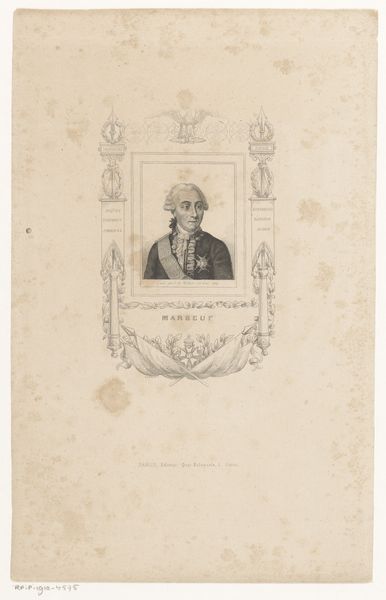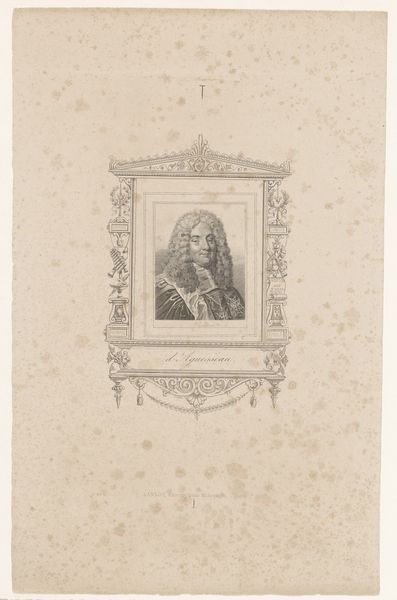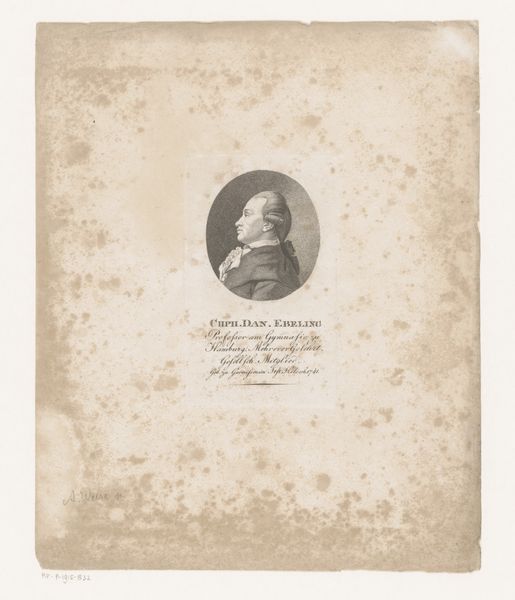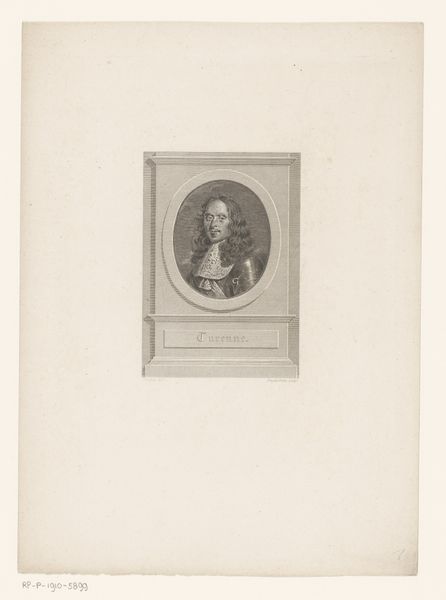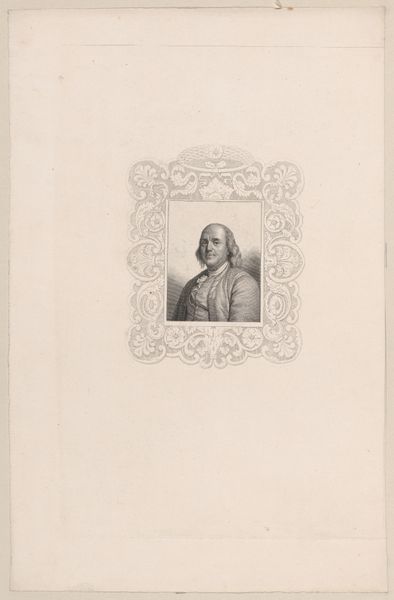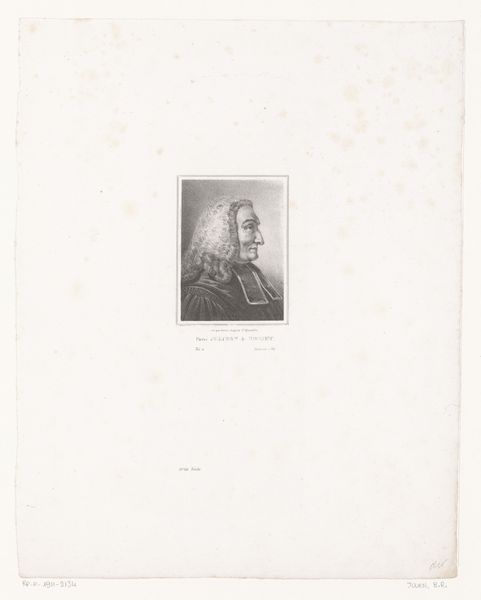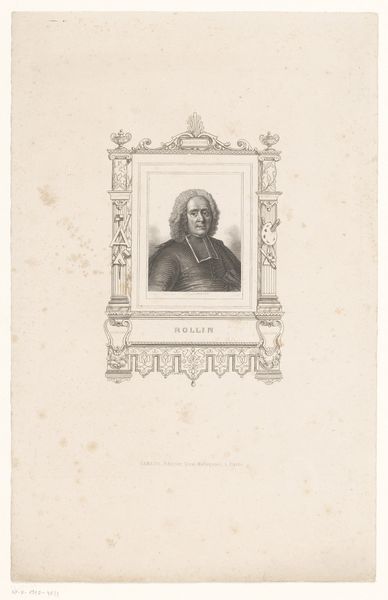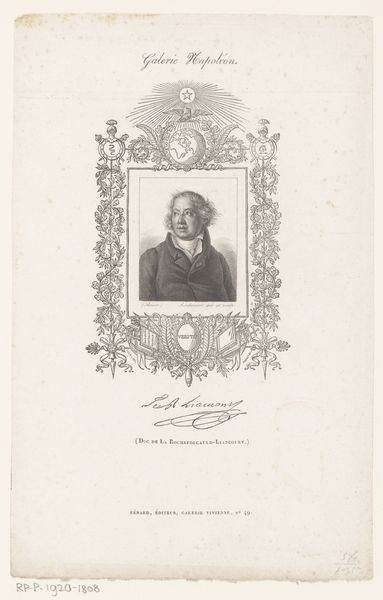
Dimensions: height 240 mm, width 155 mm
Copyright: Rijks Museum: Open Domain
Curator: Looking at this print, what springs to mind? To me, this image carries the weight of history—"Portret van Lodewijk XVIII" by Edouard Tailland. We estimate it was made between 1829 and 1910, rendered using etching and engraving on paper with ink. It's a fascinating glimpse into a bygone era. Editor: Well, the first thing that hits me is the starkness, the contrast of that rather severe portrait trapped within the ornate, almost suffocating frame. It's like history itself, formal and rigid, holding the subject captive. There’s a certain somberness to it. Curator: Indeed. Portraits, especially those of monarchs, often aimed to project power and legitimacy. This print employs the neoclassical style—order, reason, a reference to classical antiquity all designed to legitimize royal authority, even well after the French Revolution. Editor: So, the trappings of power—medals, ribbons, military garb – are meant to solidify his image, his return to power. I guess the image of that heavy frame tells me as much about those trying to keep a traditional form in place. Maybe it's a reaching backward more than a striving forward? Curator: The frame is key. The decorations signal more than status; they're visual links to shared values and stories meant to legitimize Louis XVIII in the broader narrative of the French monarchy, reaching backward into collective cultural memory. Engravings made prints widely accessible, which played a pivotal role in disseminating specific political messaging in an era that lacked photography or other digital forms of social messaging that define contemporary political campaigns. Editor: But there’s a tension here, right? That elaborate border feels almost like a gilded cage. As if to reinforce that somber note that struck me initially. And with this almost faded, ghostly quality... is it just the effects of time on the print? I feel like the attempt is to cement, not suggest, permanence. Curator: The Neoclassical style, the materials selected, and that stylistic choice could be seen as imposing a new vision, one deeply embedded in earlier regimes. That the artist worked to suggest that the then-contemporary French social order remained intrinsically connected to older value sets is something important to understand. It’s an example of cultural memory materialized. Editor: That’s insightful. Now I can't help but wonder what an anti-royalist might make of this image, then or now? The work itself and its function seem to be locked in time as much as its subject. Well, fascinating to pick apart an image seemingly straightforward at first glance! Curator: Indeed. A print like this invites us to contemplate the many ways images shape our understanding of the past and, perhaps more subtly, how they continue to shape our present. Thank you for those reflections.
Comments
No comments
Be the first to comment and join the conversation on the ultimate creative platform.
